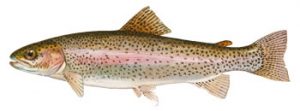Fly-fishing is a very interesting activity for those people who love fishing in ponds, rivers, and seas. For that, they need to use a fly rod. This fly rod is basically made for fly-fishing. Using only the fly rod, no one can attempt fly-fishing as it is very light weighted. The fly rods are made of carbon fibers mainly. It has a ring to follow the line where you want to try for fishes to catch. So, in this “Fly Rod Weights Explained” article, we have tried our best to explain everything that you need to know about the weights of fly rods.
So, Let’s get started!
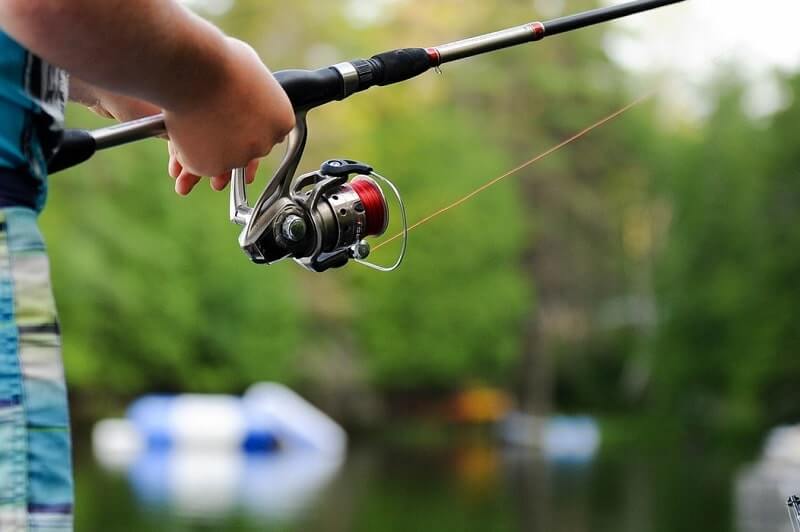
Some of The Best Fly Rods For You
Table could not be displayed.
Fly Rod Weights Explained
‘Fly rod weight’ is a very confusing term for people who are new in fishing. Those who are looking for buying a fly rod have to be very clear about the weight of a fly rod. Actually, a fly rod has nothing to do with its weight. When people talk about fly rod weight, they are basically talking about the ‘Weight class’ which is a standard classification system. This weight is usually used for identifying fly rods. When someone is going to buy a fly rod, he/she will see a label on the fly rod-end. This label is confirming the line weight and the type of the rod.
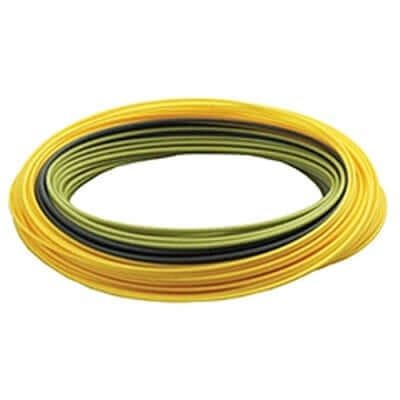 The fly line is a very important term for fly fishing. It basically provides the weight. There are different types of fly lines. A fly line comes with a certain weight which should match with the fly rod. For different types of fly fishing, there are various combinations of fly lines. Each combination comes with a certain weight.
The fly line is a very important term for fly fishing. It basically provides the weight. There are different types of fly lines. A fly line comes with a certain weight which should match with the fly rod. For different types of fly fishing, there are various combinations of fly lines. Each combination comes with a certain weight.
A fly line weight is divided into two parts. They are:
Floating line weight
You need to pay close attention to the floating line weight. There are some basic criteria for this weight. They are as follow:
- Floating lines must be lightweight as it will float on the water.
- It should be strong as it will be connected to the fly rod on one side and to the sinking lines on the other side.
- The weight has to be certain according to the depth and flow of the water whether it is a pool, river or sea.
Sinking line weight
Sinking line weight is also a significant part of fly rods. Here are the criteria for sinking line weight:
- Sinking line weight needs to match according to the fly rod as it will sink under the water.
- The sinking line has to sink underwater at various speeds. So with the term ‘speed’, the weight is highly related.
- It has to be sturdy as it will be connected to the taper on one side and to the floating lines on the other side.
So, we can say that the weight mainly identifies the size of the fly lines. The size is important as it should always match up with the fly rods. So fly rods are mainly rated by their weight.
Line weight
You need to choose line weight carefully as it needs to match with the fly rod and reel. A 5-weight reel needs a 5-weight fly rod. So, you need to choose a 5-weight fly line for this. However, it is not mandatory. Some experts say that you can also choose a 4-weight or 6-weight fly line for a 5-weight reel and rod. But, for safety, matching the line, reel and rod are very important. Line weight has a scale to observe. It is ranked from zero to fourteen. Zero is the lightest and fourteen is the heaviest. The differences are given below:
- Lighter lines are suitable for casting small flies.
- Similarly, heavier lines are best for heavy flies.
- Lighter lines are not suitable for the windy situation. On the other hand, you can use heavier lines in bad weather.
- Fly fishing line weight should be selected according to the size of fishes too.
- 4 to 10 line weights are mostly used.
As the size of the fishes is also an important factor for choosing line weight, we should know the distribution of line weights. Here is a table for you that’ll come in handy:
Table 01: Line Weight Distributions
| Line Weight | Size of fishes |
| 0 – 6 | Lighter fishes, mostly trout, pan-fishes. |
| 7 – 9 | Heavier fishes, mostly bass. |
| 10-14 | Large saltwater and freshwater fishes. |
Table 02: Line weight recommended for use
| Line Weight | Where to use |
| 0 – 3 | · Small ponds · Small streams |
| 4 – 6 | · Medium sized freshwater |
| 7 – 9 | · Large sized freshwater · Big streams · Lakes and rivers |
| 10 – 14 | · Seawater · Massive rivers |
Line weight specification
There is a standard fly fishing line weight chart declared by the American Fly Fishing Trade Association (AFFTA). Every fly fisherman should know this chart for fly fishing.
Table 03: AFFTA Approved Fly Line Weight Specification (In Grains)
Line weight | Tapers Low Weight | Tapers Target Weight | Tapers High Weight |
0 | 3.50 | 3.90 | 4.30 |
| 1 | 4.80 | 5.20 | 5.60 |
| 2 | 6.10 | 6.50 | 6.90 |
3 | 7.40 | 7.80 | 8.20 |
| 4 | 8.70 | 9.10 | 9.50 |
5 | 9.90 | 10.40 | 10.90 |
6 | 11.50 | 12.00 | 12.50 |
| 7 | 13.10 | 13.60 | 14.10 |
8 | 14.90 | 15.55 | 16.20 |
| 9 | 17.50 | 18.15 | 18.80 |
10 | 20.60 | 21.40 | 22.20 |
| 11 | 23.80 | 24.60 | 25.40 |
12 | 28.20 | 29.20 | 30.20 |
| 13 | 31.10 | 32.40 | 33.70 |
14 | 34.30 | 35.60 | 36.90 |
Table 04: AFFTA Approved Fly Line Weight Specification (In Grams)
| Line weight | Tapers Low Weight | Tapers Target Weight | Tapers High Weight |
| 0 | 3.50 | 3.90 | 4.30 |
| 1 | 4.80 | 5.20 | 5.60 |
| 2 | 6.10 | 6.50 | 6.90 |
| 3 | 7.40 | 7.80 | 8.20 |
| 4 | 8.70 | 9.10 | 9.50 |
| 5 | 9.90 | 10.40 | 10.90 |
| 6 | 11.50 | 12.00 | 12.50 |
| 7 | 13.10 | 13.60 | 14.10 |
| 8 | 14.90 | 15.55 | 16.20 |
| 9 | 17.50 | 18.15 | 18.80 |
| 10 | 20.60 | 21.40 | 22.20 |
| 11 | 23.80 | 24.60 | 25.40 |
| 12 | 28.20 | 29.20 | 30.20 |
| 13 | 31.10 | 32.40 | 33.70 |
| 14 | 34.30 | 35.60 | 36.90 |
Most Commonly Used Fly Rod Weight
Mainly, 4 to 10 line weights are mostly used for both saltwater and freshwater fly fishing. These commonly used fly fishing line weights are used to catch different fish species. Here are some examples:
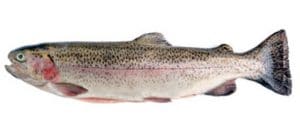
3 and 4 line weight:
- Pan fish
- Trout
- Grayling
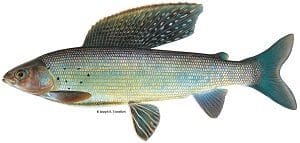
5 line weight:
- Grayling
- Smallmouth bass
- Trout
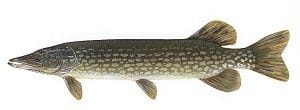
6, 7 and 8 line weight:
- Largemouth bass
- Golden dorado
- Pike
- Salmon

Steelhead - Redfish
- Carp
- Steelhead
- Bonefish
10 line weight:
- Striped bass
- Salmon

Muskie - Muskie
- Carp
- Tarpon
- Peacock bass
- Roosterfish
- Mahi-mahi
- Giant trevally
So, if you want to try fly fishing, you have to be very clear about what type of fish you want to catch.
Why Fly Fishing Line Weight Matters?
Fly fishing rods are used with fly fishing line weight. The line weight is important for the casting. Heavier lines will be perfect for making longer and accurate casts. Those who are interested in fly fishing have to be aware of the following matters:
- Fishing area
- Targeted fish species
- Size of the fishes
- Weather conditions
- Type of water ( saltwater or freshwater)
These points should be considered while buying a fly fishing rod. The fly fishing rod weight must match with the fly line weight. When a fly fishing rod is made, it is made for a specific fly fishing line weight. So, fly fishing line weight matters a lot.
Wrapping Up!
Fly fishing is now becoming popular all over the world. But, you need to know how to do it properly. I have tried my best to share everything related to fly rod weights in this detailed article.
I’ll say again, if anyone buys a 4 weight fly rod with a 7 weight reel and 7 weight line, it will be a total mess up. For safety, the rod weight, reel weight, and line weight should closely match. Otherwise, your fly fishing experience might not turn out to be a success.

